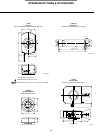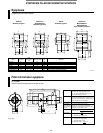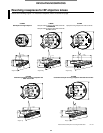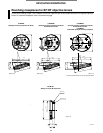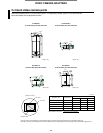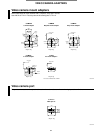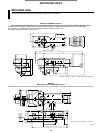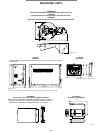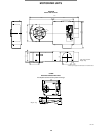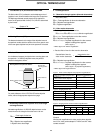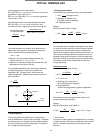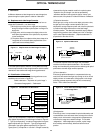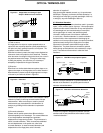
9. Aberrations
A difference between an ideal image and an actual image that
passes through an optical system is called an “aberration.”
9.1 Requirements for Ideal Image Formation
The following three requirements must be satisfied to form an
image with no aberration, or an ideal image.
(i) All the light rays coming from a single point and passing
through an image formation optical system converge on a
single point.
(ii) Image points, which correspond to object points on the
same plane perpendicular to the optical axis, are present
on the same plane.
(iii) The planar shape of an object and the planar shape of an
image that are on the same plane perpendicular to the
optical axis have a similarity relation.
In an actual optical system, however, it is very difficult to strictly
meet the requirements for ideal image formation and this causes
“aberrations” that interfere with image forming performance.
9.2 Classification of Aberrations
Aberrations that interfere with image forming performance are
classified as shown below in Figure 9-2.
Seidel’s aberration = “Expansion of a point image” +
“Curvature of image plane” + “Deformation”
Types (1) to (3) correspond to “expansion of a point image” that
goes against requirement (i) for ideal image formation in Figure 9-
1. Type (4) corresponds to “curvature of image plane” that goes
against requirement (ii) in Figure 9-1. Type (5) corresponds to
“deformation” that goes against requirement (iii) in Figure 9-1.
Types (6) and (7) correspond to “color blur” of images caused by
characteristics of glass materials used for the optical system.
“Expansion of a point image” can also be expressed by
“wavefront aberration” that regards the light as “waves” and
takes account of the phase to include the influence of diffraction.
(1) Spherical aberration
When light rays coming out of an axial object point enter a lens,
the light rays with a larger numerical aperture (N.A.) are
subjected to stronger refraction power and cross the optical axis
in positions with larger differences from the ideal image
formation position. The aberration caused this way by different
image forming positions due to differences in N.A. of axial light
rays is called “spherical aberration.” (“Spherical aberration” is
proportional to the cube of N.A.)
It is said that objective lenses with larger N.A. have better
resolution but worsen spherical aberration. Our advanced
design and manufacturing techniques have realized good optical
performance even with large numerical aperture.
(2) Coma aberration
Even though spherical aberration is compensated to be very
small, there are cases where light rays coming out of an off-axis
object point are not condensed to a single point on the image
plane but generate asymmetric blur just like a comet leaving
traces. This is called coma aberration.
(3) Astigmatism
Even though a lens is compensated for spherical aberration and
coma aberration, there are cases where an image of an off-axis
object point is not focused to a single point but separated to a
concentric line image and a radial line image. This is called
“astigmatism.” When astigmatism is present, a point image
blurs vertically and horizontally, before and after the focus
position.
45
OPTICAL TERMINOLOGY
Object
i ii iii
Figure 9-1 Requirements for Ideal Image Formation
Image plane
Aberration
Seidel's
aberration
Chromatic
aberration
(1) Spherical aberration
(2) Coma aberration
(3) Astigmatism
(4) Field curvature
(5) Distortion
(6) Longitudinal (axial)
chromatic aberration
(7) Chromatic aberration
of magnification
Figure 9-2 Classification of Aberrations
Specimen
Objective lens with
spherical aberration
Aplanatic
tube lens
Image plane
Figure 9-3 Spherical Aberration
Specimen Aplanatic
tube lens
Objective lens with
coma aberration
Image plane
Figure 9-4 Coma Aberration and Spot Shape
on the Image Plane



